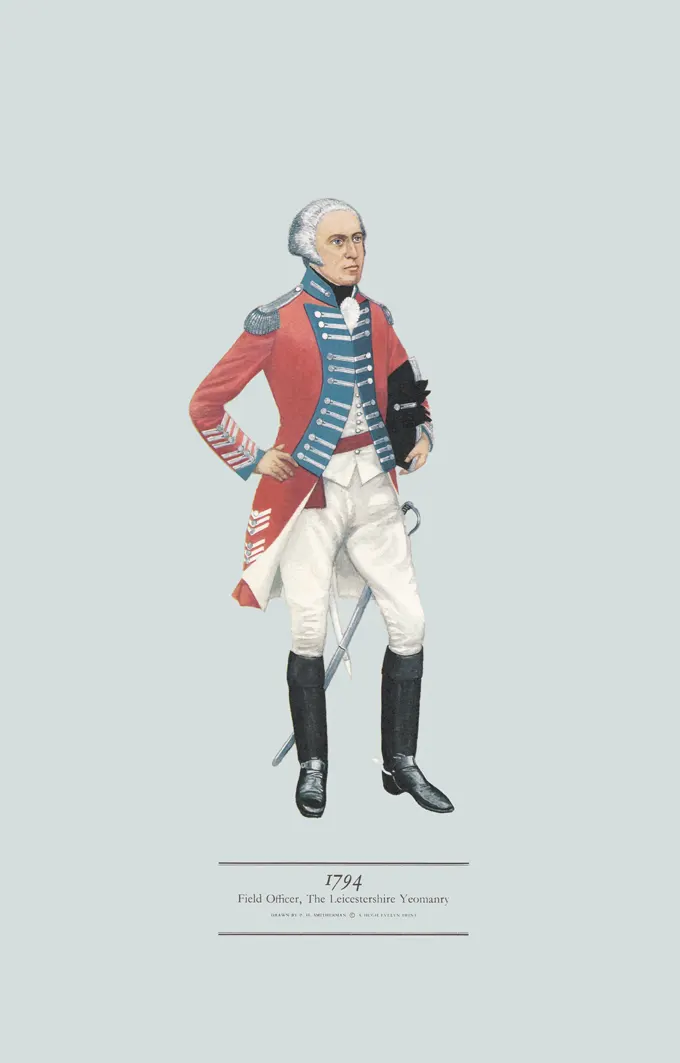Field Officer, The Leicestershire Yeomanry, 1794
£12.50
The Leicestershire Yeomanry (1803) became Leicestershire and Derbyshire Yeomanry 1957; disbanded 1967 (scroll down for a more detailed Description)
Published 1967 by © Hugh Evelyn Limited; drawn by Colonel Philip Henry Smitherman (1910-1982), Royal Corps of Signals
Size: c. 24.5 x 37.5cm [9 ½ ″ x 14 ½ ″] (may vary slightly from printers’ cut 50 years ago)
Printed on on medium cardstock weighing 144 g/sm2 faced in light greyish blue (RGB c. d5dede)
Print is STANDARD size – shipping is the same for 1 to 10 prints (based on largest print size in your order) – see Shipping & Returns
description below
In stock
Description
The Leicestershire Yeomanry (Prince Albert’s Own) was a yeomanry regiment of the British Army, first raised in 1794 at the Three Crown Inn in Leicester with Sir William Skeffington, Bart., a retired Grenadier Guardsman elected to command the ‘Leicester Regiment of Gentlemen and Yeomanry‘. Re-raised in 1803, it provided cavalry and mounted infantry in the Boer War and WW I and two field artillery regiments of the Royal Artillery in WW II. Amalgamated with the Derbyshire Yeomanry, it became the Leicestershire and Derbyshire (Prince Albert’s Own) Yeomanry in 1957. Disbanded in 1967, Its lineage can be found today in the E (Leicestershire and Derbyshire Yeomanry) Squadron of the Royal Yeomanry. Based on a portrait, this print shows the coat only down to the waist, and the cuffs. Coat tails, therefore, have been added, of a pattern which usually went with lapels and cuffs of this type. The uniform has been included in this collection because it is of a heavy cavalry pattern, whereas the usual yeomanry coat was of a light dragoon type. The officer is shown with a hat, which he would have worn in undress or off duty, and a white cravat. On duty he would no doubt have worn a leather helmet of regimental pattern and a black stock.
Source: Portrait of Sir William Skeffington, Bart.
Additional information
| Weight | 0.012 kg |
|---|---|
| Dimensions | 24 × 37 cm |





